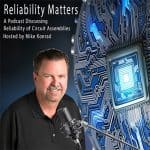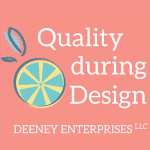
Alternatives to a Long ALT
podcast episode with speaker Fred Schenkelberg
Life testing a product or component, at times, involves months and months of testing. Even accelerated life testing can take a long time, given the limitation on our ability to cause the proper acceleration for meaningful results. So, what is one to do if waiting 3 months for test results is unacceptable?
Let’s explore a few alternatives along with the pros and cons. We examine using our knowledge and the knowledge of others to streamline the testing or avoid it altogether. We also need to consider why we need to estimate life in the first place. Sometimes, estimating the life of something is not all that useful or valuable. [Read more…]










 Ask a question or send along a comment.
Please login to view and use the contact form.
Ask a question or send along a comment.
Please login to view and use the contact form.